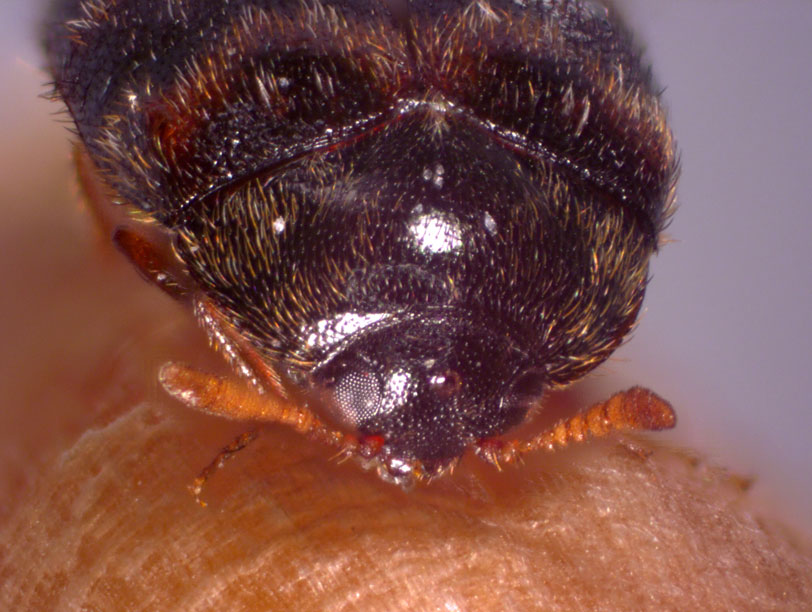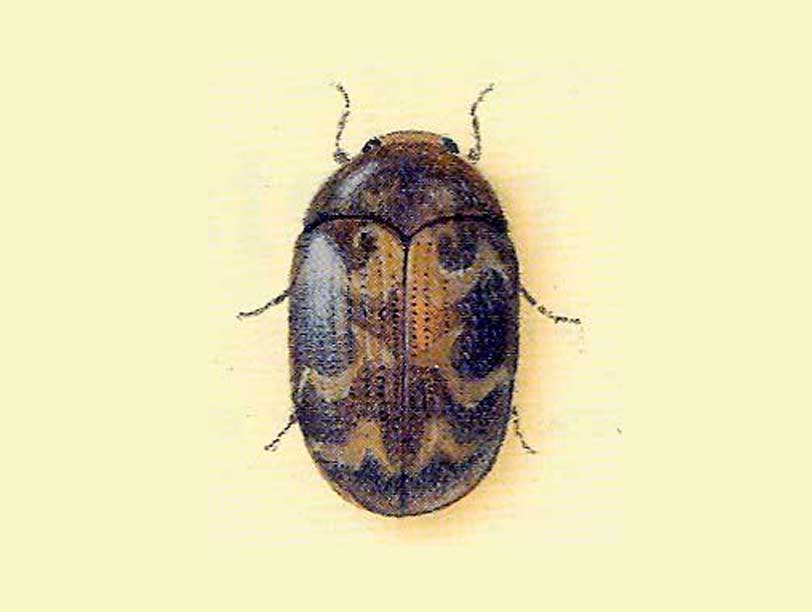Warehouse beetle
Trogoderma variabile Ballion
Classification
Secondary pest; Grain feeder and scavenger
Order: Coleoptera
Family: Dermestidae
Acronym: TVA
Description
- Adults are oval and 2.0 to 4.6 mm in length with females being larger than males.
- Elytra are generally dark with different coloured contrasting bands that vary from brown to red.
- Adults are generally is dark brown with 3 lighter brown or reddish bands.
- Larvae are whitish yellow initially and darken with age.
- Larvae are typical dermestid larvae with tufts of dense hairs on the posterior segments.
Images
Similar species
- Other Trogoderma species
- Anthrenus species
- Anthrenocerus species
Commodities affected
- Stored seeds, legumes, canola, nuts, animal feed, barley, wheat, pollen
Signs of infestation
- Presence of cast larval skins is the most readily identifiable sign of infestation
Damage
- Warehouse beetle is a generalist feeder that does not cause distinctive damage
- Larvae cause damage when they feed. Adults feed on nectar and pollen
- Larvae damage all parts of the seed except for the shell
- Larvae can infest bagged grain and processed, packaged food
How to control
Geographic range
- Is distributed worldwide and across Canada
Where found
- Is found in flour and feed mills, processing plants, feed warehouses, dried milk factories and in stored grain
- Is a pest in alfalfa leafcutter bee nests
Life history
- Females lay eggs randomly on dried plant or animal material.
- Development time ranges from 30 to 45 days, on average.
- Larvae are able to enter diapause (dormant state) when developmental conditions are unsuitable.
Not what you're looking for?
Start over again from the insect identification keys page.
"Page details"
- Date modified:




